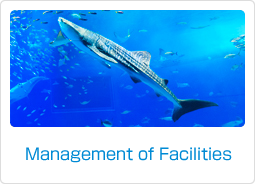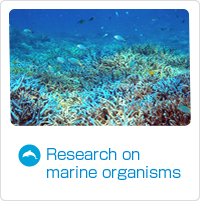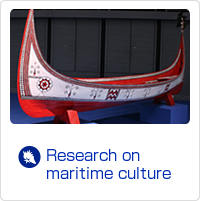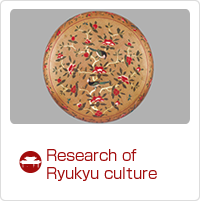- Home
- Okinawa Churashima Foundation Research Institute
- Studies of Marine Animals
- Research activity report
- Great white sharks have embryonic teeth! X-ray CT scan images clarify the mysterious growth processes of great white shark embryos

Research on marine organisms
Great white sharks have embryonic teeth! X-ray CT scan images clarify the mysterious growth processes of great white shark embryos
Great white sharks can exceed 6 meters in length. They became infamous as the giant shark in the movie “Jaws.”
However, the developmental processes of great white shark embryos in the mother’s uterus is still unknown. Most mammals including humans, and many other viviparous animals do not have teeth when they are born, their teeth develop some time after birth. It is also typical for many of the viviparous sharks to be without teeth during gestation.
In our research, we have had the rare opportunity to study great white shark embryos that were in early gestation. From these specimens we discovered that embryos at this stage had developed teeth in early gestation. It had been predicted that the embryos of great white sharks would develop teeth as this has been found in studies of sharks similar to this species, however this was the first time the presence of embryonic teeth was actually confirmed. This presence of these teeth is thought to be related to their specific reproductive mode where the embryo feeds on unfertilized nutritive eggs in the uterus.
Because of a MOU with the University of the Ryukyus we have made X-ray CT scans of mid-term embryos and were able to observe the formation of teeth within their jaws. We have succeeded in documenting the process of embryonic teeth changing to adult teeth.
Journal
Journal
Journal of Morphology
Title
Dental ontogeny of a white shark embryo
Authors
Taketeru Tomita1、Kei Miyamoto1、Akira Kawaguchi2、Minoru Toda1、Shin-ichiro Oka1、Ryo Nozu1、Keiichi Sato1(1Okinawa Churashima Foundation、2University of the Ryukyus)
Date
November 27th, 2016 (Electric version)
Key points
- Research on the embryos of great white sharks in early gestation period have revealed the development of embryonic teeth.
- The teeth of embryos are thorn-like, morphologically very different from an adult’s knife-like teeth. Embryonic teeth are considered to be useful for puncturing the egg cases to feed on unfertilized eggs which are a source of nutrition.
- Research using X-ray CT scans of embryonic teeth revealed a transition from embryonic teeth to adult-type teeth occurred during mid-term gestation.
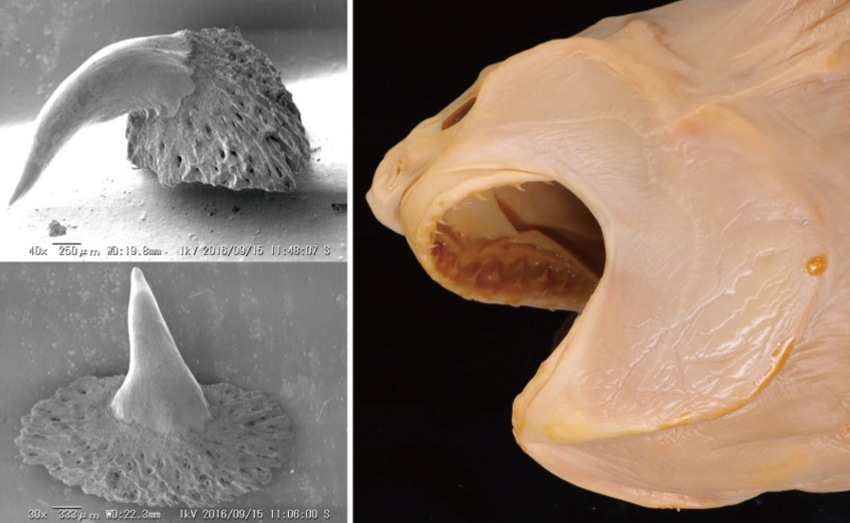
Great white shark embryonic teeth development in early gestation.
(Right) Magnified image of the head.
(Left) Electron microscope image of a tooth.
Research background: Early gestation embryos of great white shark studied for the first time
The majority of mammals, and other viviparous animals, develop teeth after birth. Lamniform sharks including the great white shark are one of the few exceptions that have developed functional teeth as an embryo within the mother’s uterus. The great white shark embryos feed on unfertilized nutritive eggs in the mother’s uterus and grow larger in size. It is thought that the presence of these teeth is related to this unusual reproductive mode.
Embryonic teeth have also been shown to exist in similar species of lamniform sharks, however specimens of great white shark embryos are so rare it had remained uninvestigated.
In 2014, in Okinawa Prefecture, a great white shark died having been being caught accidentally by local fishermen. The Okinawa Churashima Foundation Research Center dissected the specimen and early gestation embryos were studied for the first time. The research was done in collaboration with the University of the Ryukyus allowing the use of X-ray micro CT scans to observe the embryonic teeth in detail.
Outline of research results
-
The first confirmation of embryonic teeth in a great white shark.
Results of investigating dentition of an early-term embryo of the great white shark (length 45cm) revealed its similarity to the adult, containing 12 tooth rows in the upper jaw dentition and 10 tooth rows in the lower-jaw dentition.
Results from detailed observation of teeth morphology, revealed that embryonic teeth are morphologically thorn-like (image 1) and differ morphologically from adult teeth that are knife-like with serrated cutting edges. Embryos and many unfertilized egg capsules were found in the uterus and the thorn-like teeth are thought to be useful for puncturing the egg cases. -
The growth process from embryonic teeth to adult teeth was revealed.
The X-ray micro CT scanner from the University of the Ryukyus Faculty of Medicine was used to observe embryonic teeth in a mid-gestational specimen (length 80cm), observing the growth process of embryonic teeth to adult teeth. We observed the growth process of teeth within its jaws from embryonic teeth to adult teeth (image 2). In summary, we know that in the embryos of great white sharks, embryonic teeth change to adult teeth during mid-gestation.
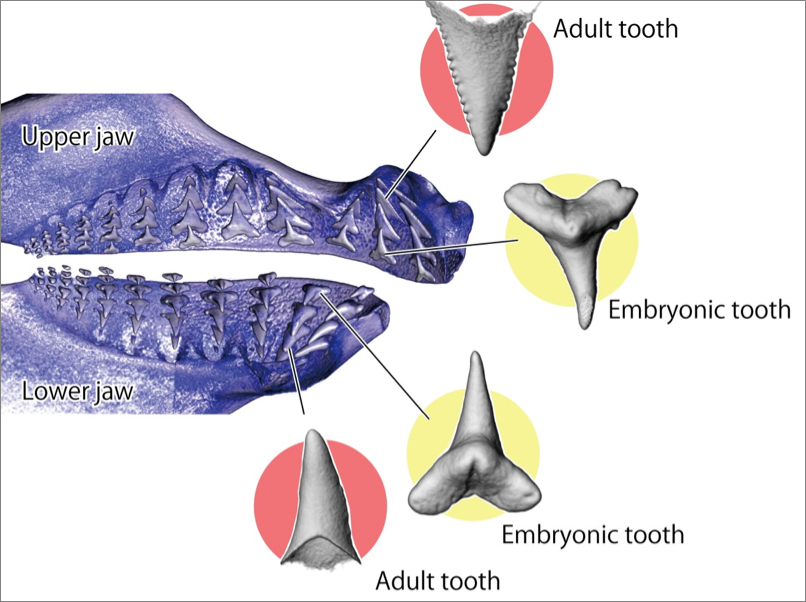
Image of CT scan of a mid-gestation great white shark embryo Observe two types of teeth, (yellow) featuring embryonic teeth, (red) featuring adult teeth.
Future prospects: to shed light on the reproductive ecology of great white sharks
Great white sharks are famous, however, embryonic specimens are very rare and their reproductive ecology remains a mystery. We had the opportunity to observe early gestation embryos of a great white shark and embryonic growth processes were revealed for the first time. We hope to continue our research to further understand gestation, how oxygen is sent from the mother’s uterus to the embryo, how nutrition is absorbed, and to reveal the mysteries of great white shark reproduction.
Researcher profile
Tomita, Taketeru: Completed doctoral program at the University of Tokyo in 2011.
Researcher at Florida State University, then in 2015 he joined the Okinawa Churashima Foundation Research Center. He specializes in the functional morphology of sharks and rays, and researches morphological evolution.
Copyright (c) 2015 Okinawa Churashima Foundation. All right reserved.













